Words by Katie Hagan
“Dance will forever be a part of people’s lives” expresses Anand Bhatt of Dance City, the organisation’s recent CEO who was also producer of Aakash Odedra Company when it became the fastest growing dance company from 2011-17. “It’s just dance organisations must respond to the big changes that have happened in the industry, to ask what the needs are right now?” he continues as we chat over a video call from a cloudy day in Edinburgh.
Located in north-east England, Dance City is a hive for presenting international dance work, education programmes and bringing together communities across its Newcastle home and beyond. It is a place where people from all walks of life can come to be in dialogue with dance whether that be through taking part in the 55+ years Boundless dance company, experiencing performances by award-winning dance companies including Rhiannon Faith, Aakash Odedra and VOXED, or enrolling on Dance City’s world-leading higher education courses.
For professional dance artists in particular, Dance City is pretty much the closest you can get to a support haven, offering various commissions and residencies that reflect the needs of practising dance makers today. “Dance City’s mission is asking the important question: How do dance artists make their best work?” says Anand, who was appointed CEO in the first few months of the bleary pandemic. “For Dance City, it’s about making sure that our resources, studio space and theatre are available to artists in a way that allows them to breathe, discover, explore, and to test, fail and stand up again,” he continues.
One of those opportunities is Creative Summer, an annual residency programme that gives a week’s space for free to artists to play and ask questions. As part of the programme they are also able to attend informal ‘get-to-know-you’ meetings and show their work at a sharing event attended by programmers and producers.
The Creative Summer experience, as I was able to pay witness to when I visited one week at the end of August, is one of warmth, joy, and experimentation. Creative spark and energy soar around the Dance City building; a construction imbued with light, quirk and openness thanks to its 2005 design by architects Malcolm Fraser and Calum Duncan. “It feels like the Dance City building is open purely for Creative Summer,” says Ellie Trow of Pelican Theatre, one of this year’s awardees. “Having this space for a week is pretty much unheard of!”
In studio 4, I watch Pelican Theatre swoop around the space as they spend their Creative Summer researching their project Tranquil, a dance experience for those in rural locations. Tranquil, created by co-founders Ellie and Pagan Hunt, in collaboration with Meta4 Dance Company, comprises a performance of Pelican Theatre’s existing piece Blue Mind, Meta4’s piece Confluence; workshops and an art installation.

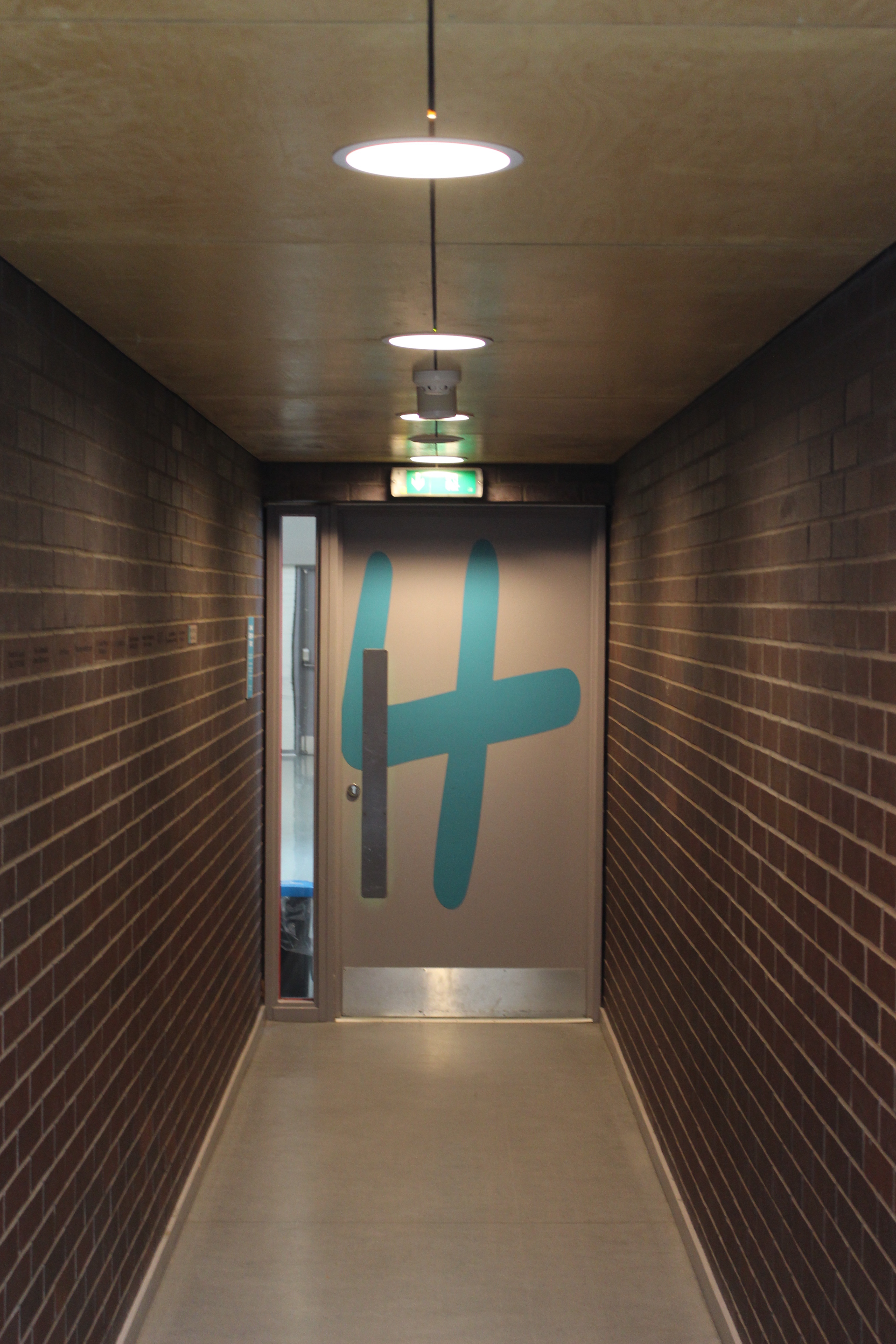
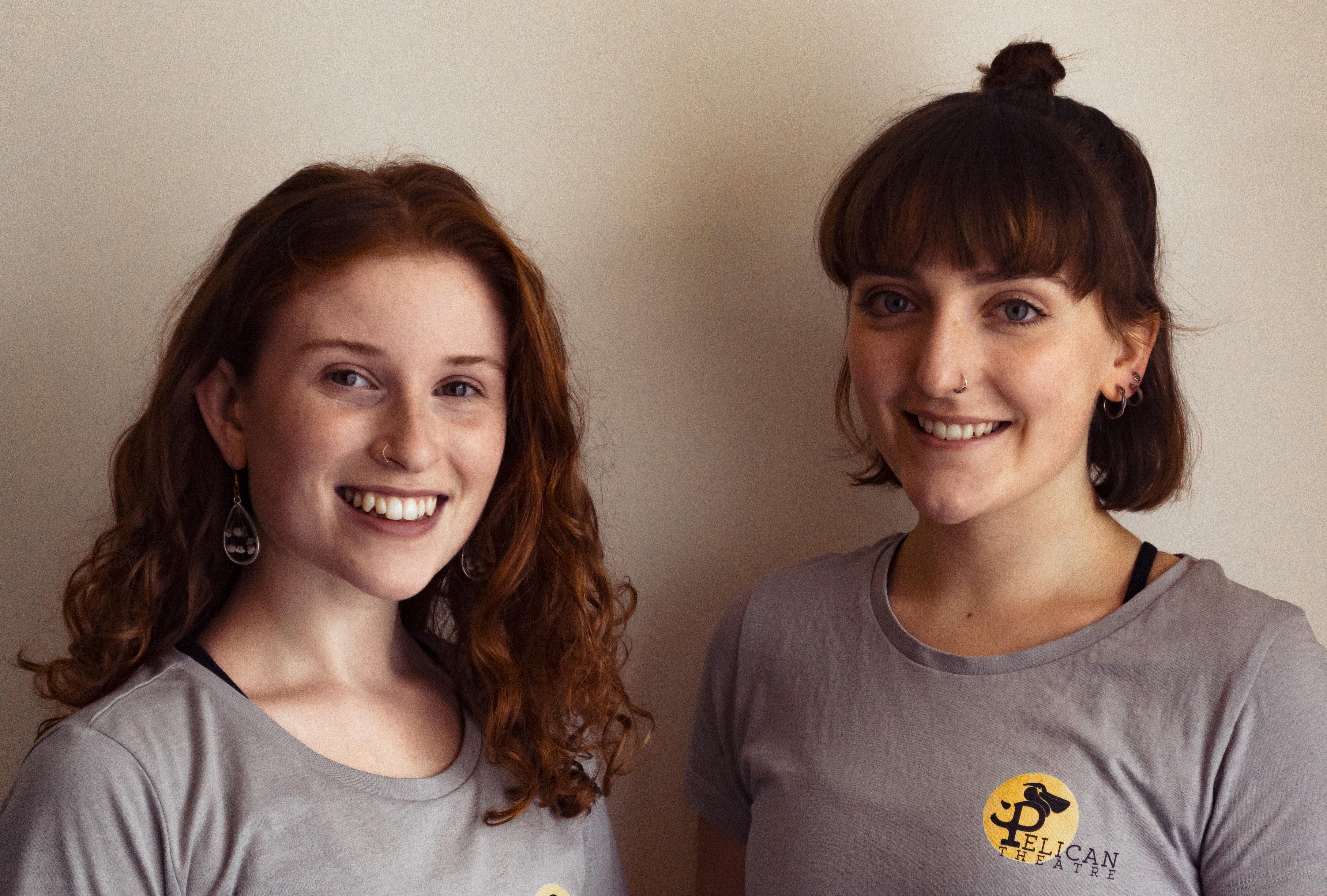
On their decision to package together an experience rather than focus on touring a single performance, Ellie says: “We’re trying to break the barriers of having to travel into a city and go to a theatre to see dance. With Tranquil we want to bring dance to the people and make it as accessible as possible.” As well as developing the piece at Creative Summer, Ellie and Pagan are in a consultation period where they are inviting example groups to test days to request feedback on Tranquil.
Ellie and Pagan created Pelican Theatre after doing the MA Advanced Dance at Dance City together a few years ago. David Lloyd, who was a tutor on the course and has toured professionally with the likes of Jasmin Vardimon, was a massive influence, and the programme let them work with leading companies including Gecko and Lost Dog. Physical theatre is a big part of how they think about choreography.
But where did the concept of Tranquil come from? “Things really started with Blue Mind, the performance that we originally created that’s part of Tranquil,” begins Ellie. “I found inspiration for that piece when I read a book called ‘Blue Mind’ by Wallace J. Nichols, which explores the human race’s natural affinity with water, and how it helps with wellness and mental health. Science says that water relaxes you and I found that really affirming. There’s also evolutionary reasons behind why humans have always sought out water. I wanted to make a dance work that would share these benefits, and Pelican’s practice, with an audience,” she says.
During Creative Summer, and alongside dancers Lily and Maria, Ellie and Pagan have seen this concept translate from something artistic into how dance creates community. “We both want to say things in our work — work that people come away feeling a connection to,” says Pagan. “For that reason, I’ve stopped thinking of Tranquil as an artistic concept. Instead, I’m thinking about the audience and the experience we’re creating for them.”
This intersection between artists and community seems to be a running theme in Dance City’s annual Creative Summer, which is long to hopefully continue. “A dream for this programme would be to see how big it could get,” says Anand. This year Dance City has worked in partnership with Newcastle College to give more space to the Creative Summer 2022 cohort. “We want to continue and expand upon this legacy that Newcastle is a place where international and regional artists can come, share their practice and exchange cultures and experiences,” says Anand.

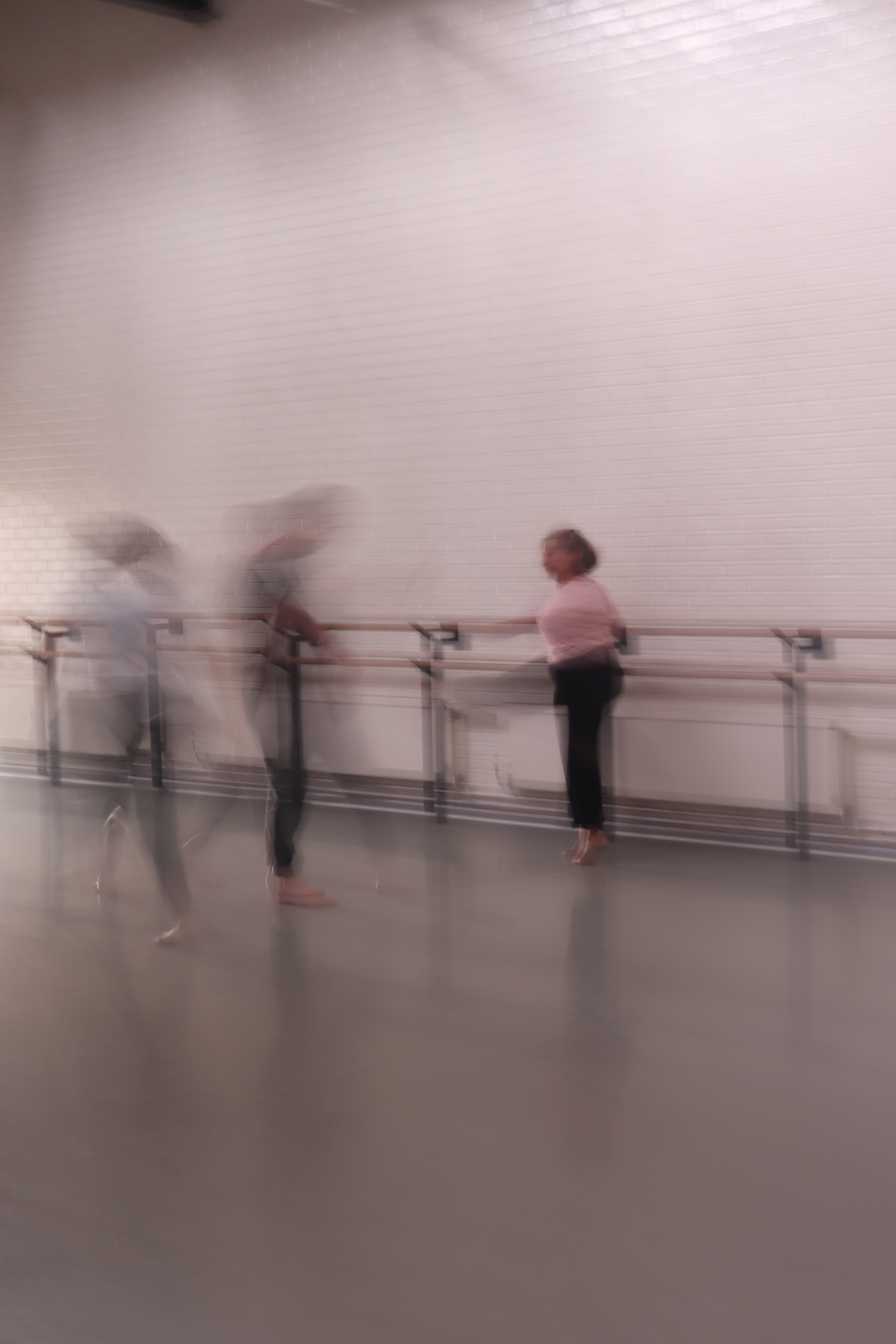
Artists are the inlet that brings waves of people from around the community to dance’s shores, as seen in the ambitions of Pelican Theatre’s Tranquil. Artists are bearers of beauty and energy, they dance with people and bring joy, nurturing bonds and belonging. And the possibilities that occur when any of these happen are truly life changing.
As a dance artist, David Klotz has journeyed from doting dad at his daughter’s dance shows; to community dance participant; to choreographer. His entry into dance was the many years spent watching his daughter Lizzie Klotz’s performances as a student at London Studio Centre and as a dancer performing across the world. Very recently ex-cop David worked with Lizzie to make the dance industry’s resident tear-jerker film, Dancing with my Dad.
David’s worked with Vanessa Grasse on the international project MESH, Chisato Minamimura, Deaf artist Chris Fonseca, Rendez-Vous dance and Society of Strays. In his sixties, David is now working with collaborators Carolyn and Joan — members of Dance City’s Boundless company — on a piece that he originally thought about in 2018. “I’m working with these two lovely people [gestures to Carolyn and Joan] to explore time, change and interactions between people,” begins David, as we chat in one of Dance City’s cool studios in the mid-to-late afternoon. “We’ve each taken one concept as a stimulus: Joan has ‘elastic’, I have ‘waves’ and Carolyn has ‘straight lines’, to explore the different pathways we can take together.”
“As this piece is improvisatory, it’s been really fantastic to use these concepts to think about movement,” says Joan.
Some explorations have been more successful than others, as Carolyn highlights. “In the studio I think it’s good to realise when things don’t work,” she says.
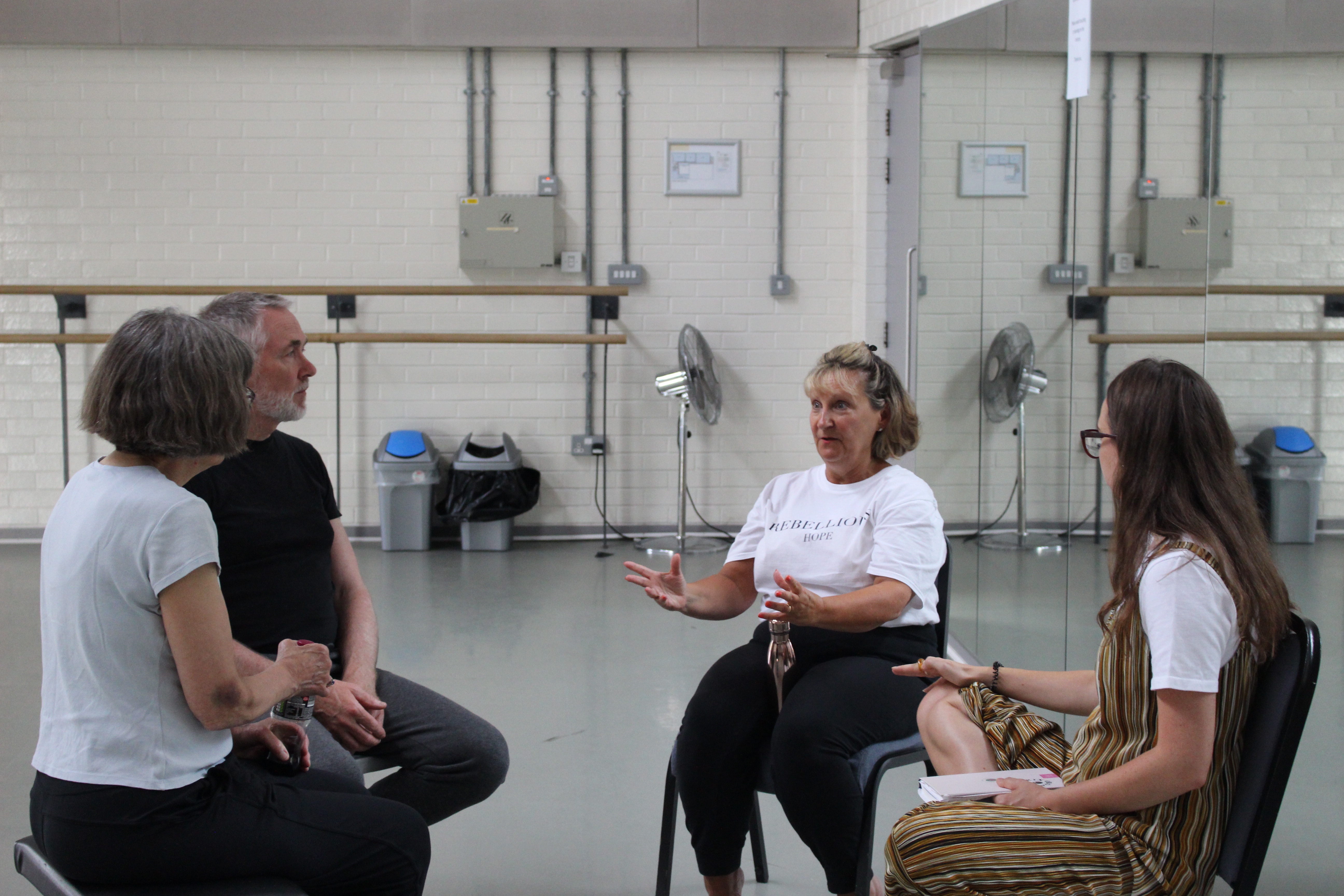
“Didn’t you bring in those plastic sticks, or whatever they were, to explore your idea?” jokes David warmly.
“Ah yes, I wanted to make a noise. They were knitting needles, David, and I wanted to use them to experiment with noise and surface. They are straight in appearance and make a clicking noise when you beat on the walls with them,” says Carolyn gesturing like a conductor rat-a-tatting in mid-air. “Sadly, they broke,” laughs Joan.
“Equipment malfunction!” says David.
The bond between David, Carolyn and Joan is very special. As I speak to them in the studio, initially I feel like I’m disturbing their perfect chemistry, but it doesn’t take long before I quickly share in their joy. As a trio, they’re infectious to be around and there are plenty of belly laughs. “I have a background in engineering and have knowledge of the different types of ‘waves’,” says David. “It’s safe to say I definitely bored Joan and Carolyn to tears this week with all the details about the wavelengths of microwaves and ovens!”
“Didn’t I start waving goodbye at some point when we did a run through?” Carolyn quizzes.
“Oh yes,” says David, “During the movement task Joan and I were playing and bringing waves into our bodies and Carolyn just starts waving, and I thought what the hell is she doing!” David chuckles. “That’s where Carolyn’s lateral thinking comes in…”
David, Joan and Carolyn explain to me that their piece is always moving forward. “It never moves backways, which is much like our lives here on earth”, says David. “Sometimes we just stop moving. There’s no fixed routine or interval and things happen at random. That’s much like how life is really. You don’t know what’s going to happen tomorrow.”
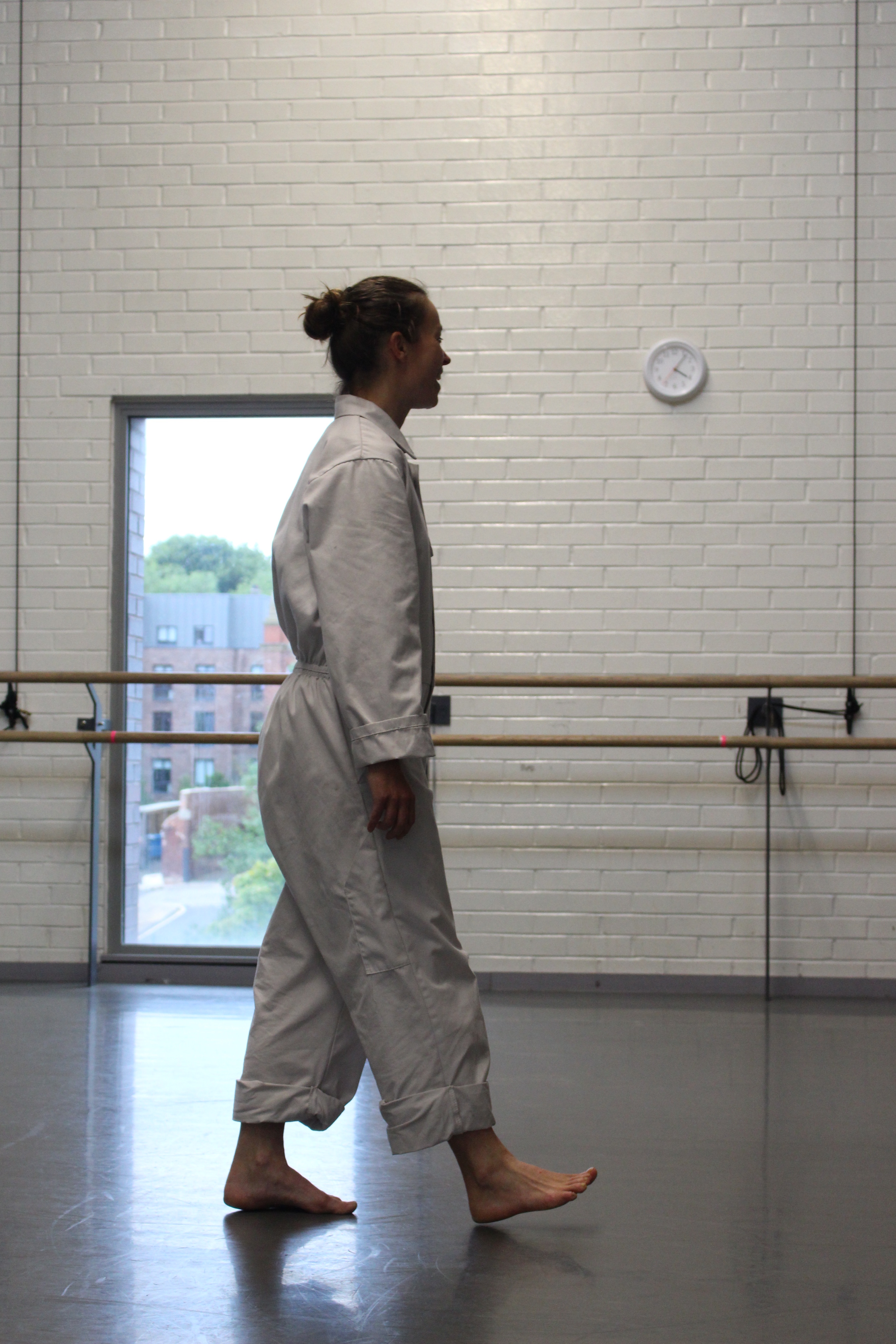
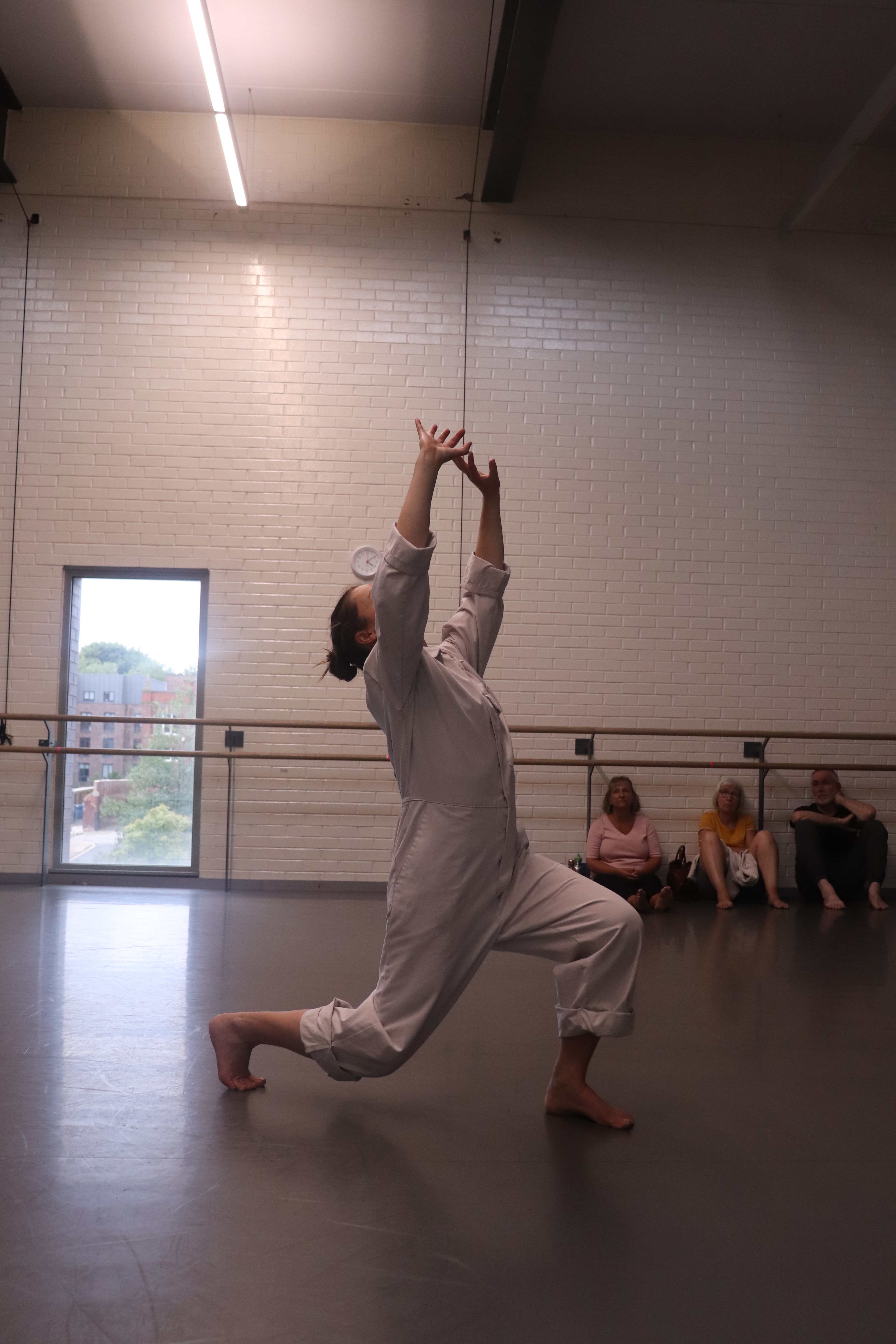

Creative Summer is a brilliant example of a dance programme that reflects the needs of artists working at different points in their career: Pelican Theatre is creating a full ‘experience’ package to tour to different rural venues, Penny Chivas (who we interviewed a few weeks ago) was there prepping for her show Burnt Out at the Fringe; and David, Joan and Carolyn were in the studio to play, without feeling the pressure to make a ‘product’.
As much as Creative Summer is about basic space and support, it also shows the possibilities that occur when dance and community are able to exist symbiotically. On the final day of my visit, we all watched each other’s sharings and took part in performances. The sense of togetherness at that moment was poignant, sincere and uplifting. “I think that’s a big future for Dance City,” ends Anand. “Where can art continue to meet community to find new meanings?”
All images by Fitzgerald Honger. Other members of Creative Summer cohort: Amanda Limtouch, Anthony Lo-Giudice, Beth Veitch, David Klotz, Dora Rubenstein, Gillian Hutton, Holly Irving, Toi Guy and Jesse Salaman, Marianna Minasova, Micheal Heatley, Nicole Watson, Pelican Theatre, Penny Chivas, Sarah Dobbs, Susan Moir
